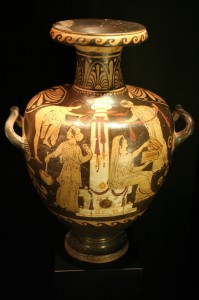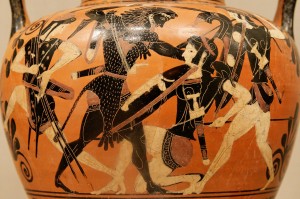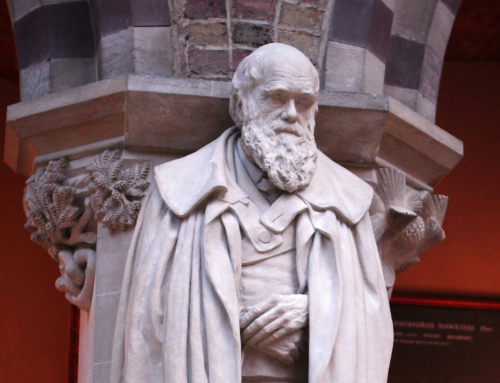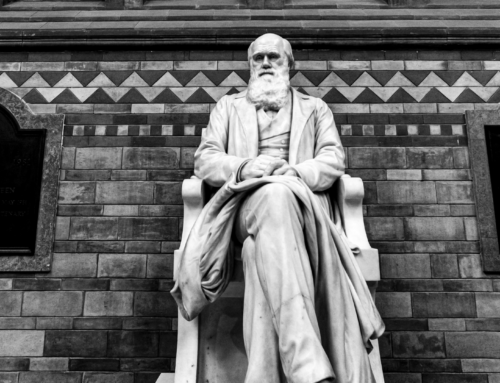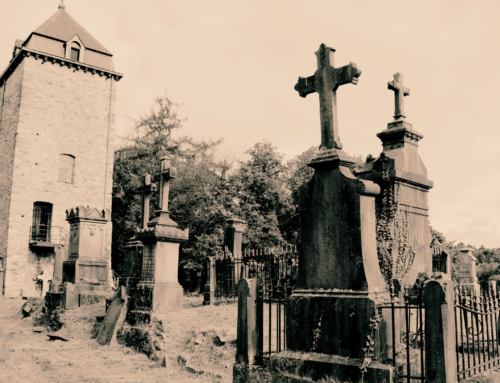In my previous post, Giant Speculations, I talked about some of the ancient legends about giants and the possible connection to those mentioned in Numbers 13. In particular, many of these ancient legends describe the giants as having a fondness for eating human flesh. Numbers 13:32 describes the land of Canaan as a “land that devours its inhabitants.” While there are several plausible interpretations of that phrase, it could very possibly be a reference to man-eating giants. This potential connection between ancient Greek mythology and biblical history led people to ask if I knew of other possible connections between the two areas. So let’s look at a few of the many biblical accounts that seem to be echoed in Greek mythology (although intentionally or unintentionally distorted through the years).
The First Woman
The Bible tells us that the first woman was named Eve (Genesis 3:20). God created Adam first from the dust of the ground and then made Eve from Adam’s rib. There was no death, suffering, or evil in the world when God finished His work of creation on the sixth day (Genesis 1:31). In Genesis 3, we are told that the serpent deceived Eve, and after looking at the forbidden fruit (from the tree of knowledge of good and evil), she saw that it was good for food, pleasant to the eyes, and desirable to make one wise (Genesis 3:6). So she took the fruit and ate it. Adam followed his wife, and as a result of their rebellion against God, the Lord cursed the serpent and the ground. As a result of that sin, death, suffering, bloodshed, and evil would now be commonplace.
According to Greek mythology, the first woman was named Pandora. For you younger readers, Pandora is not just the name of an internet radio program. She was made from water and earth and blessed with many gifts (hence the name, pan = “all” and dora = “gift”). She was also given a large jar (or box in some retellings) holding all of the world’s evils and told to never open it. Curiosity got the best of Pandora and she eventually opened the jar allowing evil to fill the world.
Of course there are several differences between these two accounts, but notice the similarities. Before evil was ever in the world (although it may have already been around in the heavenly realm), the first woman was tempted. In an effort to satisfy her longings and curiosity, she makes the choice that she was explicitly commanded not to do, and in doing so, she plays a role in unleashing evil on this world. Although the Bible tells us that Eve was the first to eat the fruit, it also places the blame on Adam for bringing sin into this world.
The Strong Man
This is one potential parallel that many people familiar with the Bible and Greek mythology have wondered about. Both Samson and Hercules are well-known for their legendary strength, and many other similarities exist between the two.
Samson’s mother is described as barren (Judges 13:2) meaning that she could not have children. One day, she is visited by the Angel of the Lord who informs her that she will bear a son who will begin to deliver the Israelites from the Philistines. She is given instructions about dietary requirements and is told not to let a razor cut the child’s hair. She tells her husband Manoah. The Angel then appears to both of them and repeats some instructions about dietary requirements. Samson is born, grows up, and becomes very strong. He kills a lion with his bare hands (Judges 14:6), kills a bunch of men who threatened to kill the woman betrothed to him (Judges 14:15, 19), kills a thousand Philistines with the jawbone of a donkey because they had killed his betrothed and her father (Judges 14:6, 15), sleeps with a harlot (Judges 16:1), falls for Delilah (Judges 16:4), shares the secret of his strength and is finally captured, blinded, and mocked (Judges 16:17–27). Samson died when he destroyed a temple of Dagon by pushing two of its supporting pillars apart, and in the process he killed about three thousand Philistines (Judges 16:27–30).
Hercules is said to have been a demi-god, the son of Zeus and a woman named Alcmene. His first wife was a woman named Megara. Hera temporarily made Hercules insane, and he killed their two children (some stories have him killing Megara too). His sanity restored, Hercules completes the famous 12 labors, one of which is killing the Nemean Lion. After a life of promiscuity and heroic deeds, Hercules is poisoned and dies. While the vast majority of his deeds are mythical, some believe Hercules was a real person living in the 13th century BC.
There are many differences between these two mighty men, but the similarities are striking. If some of the legendary details of Hercules’ life were borrowed (but distorted) from the Samson account, then perhaps this is another connection between the true history in Scripture and the distorted legends of mythology. Hercules was a demigod (child of a god and human), while Samson’s father was Manoah, although his mother was visited by God prior to her conception (it’s easy to see how this visit could have been distorted through retellings across cultures to think of him as a demigod). Both men experienced tragic endings to their first marriages. Both men famously killed lions. Both were known for their incredible strength. Samson died by pushing two pillars in Dagon’s temple, and Hercules is also known for having pillars associated with him. The two peaks at the western end of the Mediterranean Sea, one on Africa’s north coast, and one on Europe’s southern coast are called the Pillars of Hercules. The time period in which Hercules is thought to have lived also corresponds well with the life of Samson.
The Giants
One of the more obvious points of similarity between Greek mythology and the Bible is the subject of giants. Many Bibles use the word “giants” in Genesis 6:4 as a translation of the word nephilim. The popular claim is that nephilim means “fallen ones,” but this is highly unlikely. As I’ve pointed out in this blog before and in greater detail in The Sons of God and the Nephilim, the word probably does not come from the Hebrew verb “naphal” (meaning “to fall”). To convert the verb naphal to a plural participle then the plural would become nephulim or nophelim. It would not become nephilim. The word nephilim almost certainly comes from the Aramaic noun naphil. The plural of this word isnephilin, and when brought into Hebrew, the word becomes nephilim. The word naphil means “giant,” so the plural of this word (nephilin / nephilim) would mean “giants.”
Where did these giants come from? Genesis 6:4 tells us that the giants were on the earth in the days before the Flood and afterward—whenever the sons of God (bene ha ’elohim) sired children with women. The “sons of God” are clearly viewed as heavenly or divine beings in the Old Testament (Job 1:6; 2:1; 38:7; Deuteronomy 32:8, ESV; see Daniel 3:25 for the Aramaic equivalent, bar ’elahin). These giants were called “mighty men of old, men of renown” by the biblical author.
Greek mythology also speaks of numerous mighty men of old. The Olympian gods frequently had affairs with women. The resultant progeny of these unions were demigods like Hercules and Perseus. Demigods were endowed with great strength and abilities, and they were often considered to be giants. This type of mythology is actually very common among ancient cultures around the world. The Bible provides just a few details in a straightforward manner while Greek and other ancient mythologies have developed all sorts of elaborate stories around these individuals.
Conclusion
There are many other similarities and possible parallels between the biblical accounts and ancient Greek mythology, and some of these connections that I have drawn may be merely coincidental. Perhaps some of the similarities only exist because ancient legends were changed to accommodate or include biblical ideas. But it does not make sense to conclude that the ancient Greeks only taught these ideas because they heard them from Christian missionaries since the sources for these Greek myths have been around since long before Christianity came on the scene. It seems fairly obvious to me that these stories find their basis in reality. The Bible records the true history of our world without embellishment, while many ancient cultures preserve portions of the true history that are often obscured by legendary details.
Thanks for reading!


